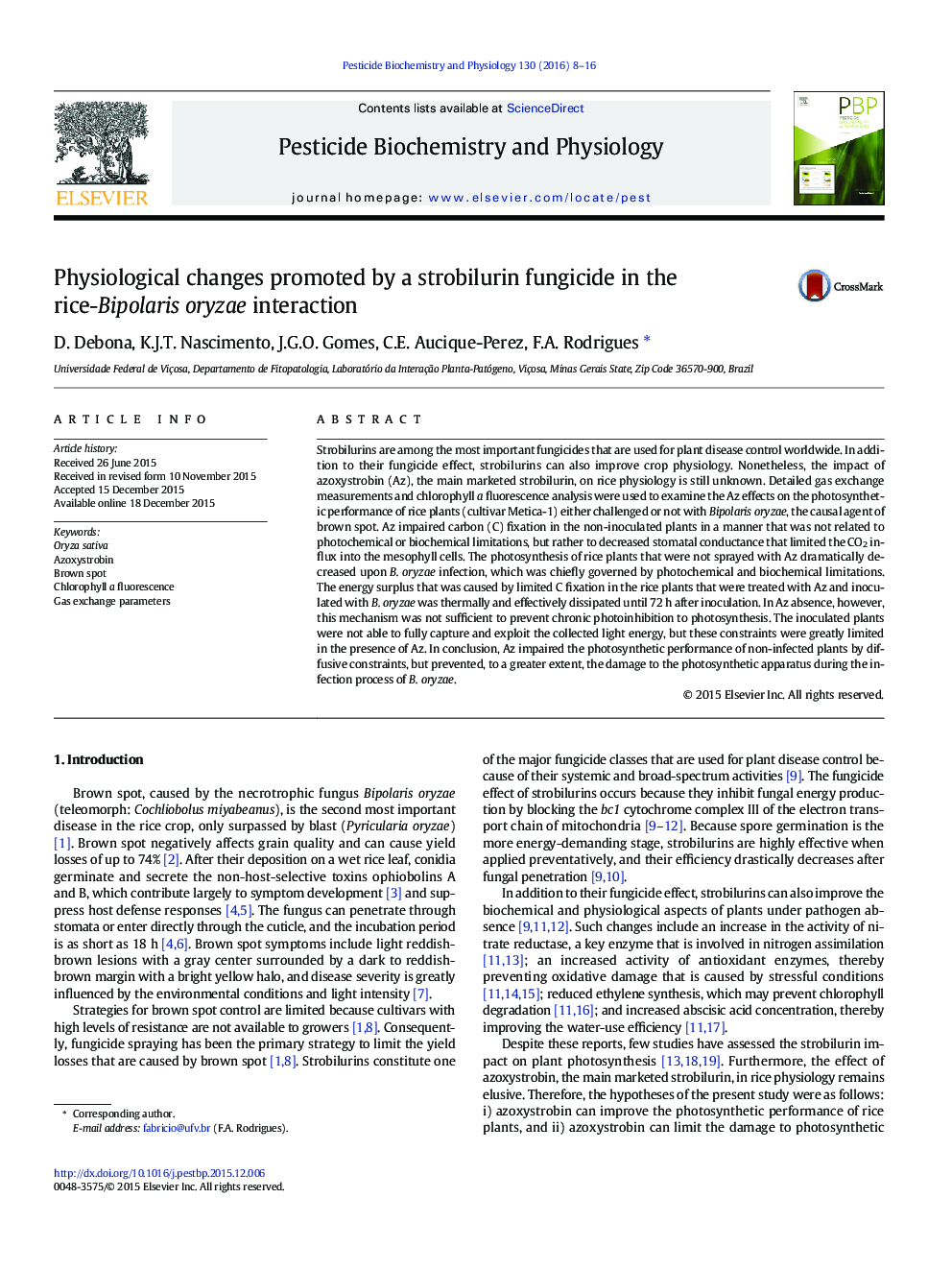| کد مقاله | کد نشریه | سال انتشار | مقاله انگلیسی | نسخه تمام متن |
|---|---|---|---|---|
| 2008935 | 1541769 | 2016 | 9 صفحه PDF | دانلود رایگان |

• Azoxystrobin decreased rice photosynthesis mainly by diffusive limitations.
• Bipolaris oryzae infection dramatically reduced rice photosynthesis.
• The B. oryzae-induced photosynthesis decreases were chiefly governed by biochemical constraints.
• Azoxystrobin prevented, to a certain extent, the fungal-induced photosynthesis decreases.
Strobilurins are among the most important fungicides that are used for plant disease control worldwide. In addition to their fungicide effect, strobilurins can also improve crop physiology. Nonetheless, the impact of azoxystrobin (Az), the main marketed strobilurin, on rice physiology is still unknown. Detailed gas exchange measurements and chlorophyll a fluorescence analysis were used to examine the Az effects on the photosynthetic performance of rice plants (cultivar Metica-1) either challenged or not with Bipolaris oryzae, the causal agent of brown spot. Az impaired carbon (C) fixation in the non-inoculated plants in a manner that was not related to photochemical or biochemical limitations, but rather to decreased stomatal conductance that limited the CO2 influx into the mesophyll cells. The photosynthesis of rice plants that were not sprayed with Az dramatically decreased upon B. oryzae infection, which was chiefly governed by photochemical and biochemical limitations. The energy surplus that was caused by limited C fixation in the rice plants that were treated with Az and inoculated with B. oryzae was thermally and effectively dissipated until 72 h after inoculation. In Az absence, however, this mechanism was not sufficient to prevent chronic photoinhibition to photosynthesis. The inoculated plants were not able to fully capture and exploit the collected light energy, but these constraints were greatly limited in the presence of Az. In conclusion, Az impaired the photosynthetic performance of non-infected plants by diffusive constraints, but prevented, to a greater extent, the damage to the photosynthetic apparatus during the infection process of B. oryzae.
Figure optionsDownload as PowerPoint slide
Journal: Pesticide Biochemistry and Physiology - Volume 130, June 2016, Pages 8–16